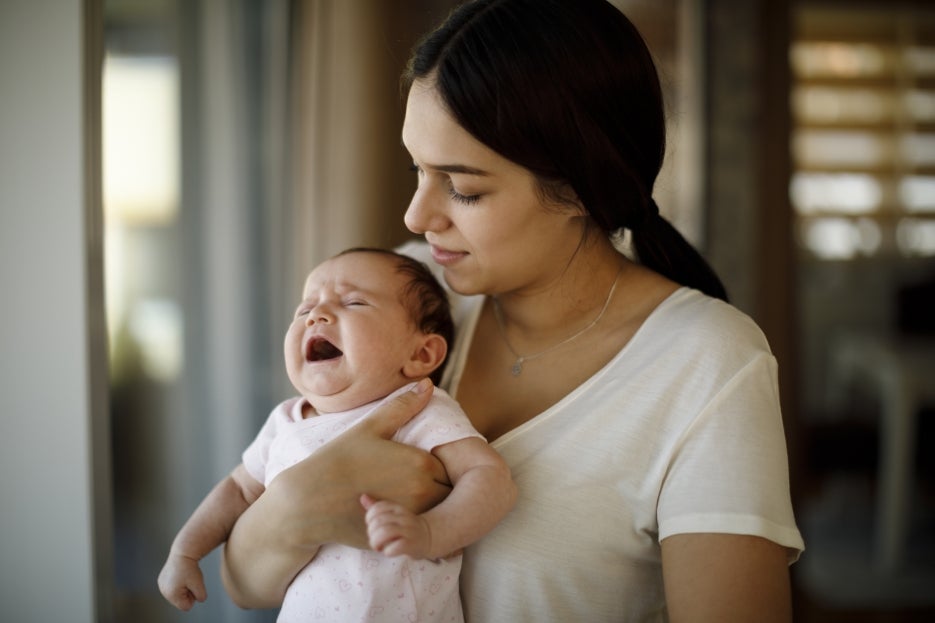Should I let my baby “cry it out?”
Babies have one way to tell you they are hurt, hungry, sad, scared or uncomfortable: they cry. In human babies, crying is the first form of communication. Studies abound with “proof,” fancy words, diagrams, charts and the opinions from many doctors and researchers who want to inform a parent whether they should let their baby cry or not, for how long and if it will damage their baby. After reading many of these articles, I will summarize the results: we still have no clue. There are some fascinating facts I can share, however, that may help you make your own decisions about your crying infant.
No matter how a parent responds to a crying infant, there is a neurobiological, or brain and body response to the baby’s cries. The parts of the brain that are shown in an MRI during infant crying are the areas for displaying affection, distraction, nurture, pick up and hold or talk. The strongest reaction shown is to pick up and hold. Crying interrupts the caregiver’s cognitions or thoughts and demands a response. This is how babies survive. The mother of the infant shows a more pronounced response to the infant cries than does a caregiver who is not the mother. Now for the data, published in the last few years, that divides parents and generations. What should a parent do when their infant cries?
- If a caregiver responds immediately to the crying infant, data from Princeton University in 2017 shows long-term benefits for attachment, wholesome development, pro-social behavior and the security of the child. In more than 180 societies, evidence of less crying was displayed in infants who had their needs met on demand. Delayed response may show higher distress in the infant, manifested by higher heart rates, higher cortisol levels and abnormal stress responses later in life.
- Data from the University of Warwick in 2020 shows that by 18 months, there are no adverse effects of letting your baby “cry it out,” or not picking up your baby and providing calming measures. This data does not mean babies are always left to cry. The data supports letting infants cry a few times or often is not damaging long term. Not causing damage means healthy attachment behaviors manifested at 18 months of age.
- A university in the Netherlands published a study in 2019 showing that baby’s calming responses were similar for parental soothing and mechanical soothing (which is a smart crib providing swaddling, sound and movement). The mechanical methods are not to replace the parental calming responses, but to support the parent in getting the rest and breaks needed to prevent exhaustion, frustration and depression causes by excessive crying from the baby and lack of sleep.
This data brings up deep-seated emotions from parents, who are the real experts. There is evidence for varying styles of responding to the cry of infants. What we do know for sure is that a baby’s needs met during the first three months of life are essential for survival. We also know for sure, that babies will self-regulate more as they get older. It is vital that you listen to yourself and have open communication with other caregivers for the baby. When you find a method that makes the heart, mind and body work in synchronicity, chances are, that is the right choice for you, your baby and your growing family.
You may want to discuss your concerns or plans with your baby’s pediatrician. Call 505.727.2727 for an appointment with a Lovelace pediatrician.
Resources
https://pubmed.ncbi.nlm.nih.gov/29078366
https://www.sciencedaily.com/releases/2020/03/200310193305.htm
https://www.laleche.org.uk/letting-babies-cry-facts-behind-studies/
https://pubmed.ncbi.nlm.nih.gov/31017930/

